The flag of Myanmar is a distinctive emblem, encapsulating the nation’s essence and historical path. It’s a powerful representation of sovereignty and its people’s collective values and aspirations. It transcends mere symbolism, narrating Myanmar’s unique story and vision for the future.
Flag of Myanmar
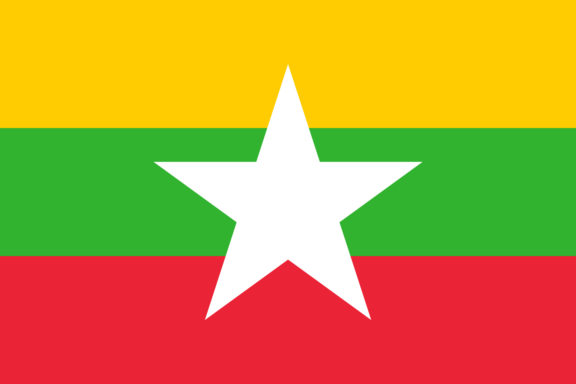
The flag of Myanmar consists of three horizontal stripes of equal width in red, green, and yellow, with a large white five-pointed star centered on the hoist side.
This modern design symbolizes a significant shift in Myanmar’s history, representing a new era for the nation. The flag’s bold colors and the prominent star are distinctive, making it a recognizable symbol of Myanmar globally.
Flag of Myanmar: Color Palette
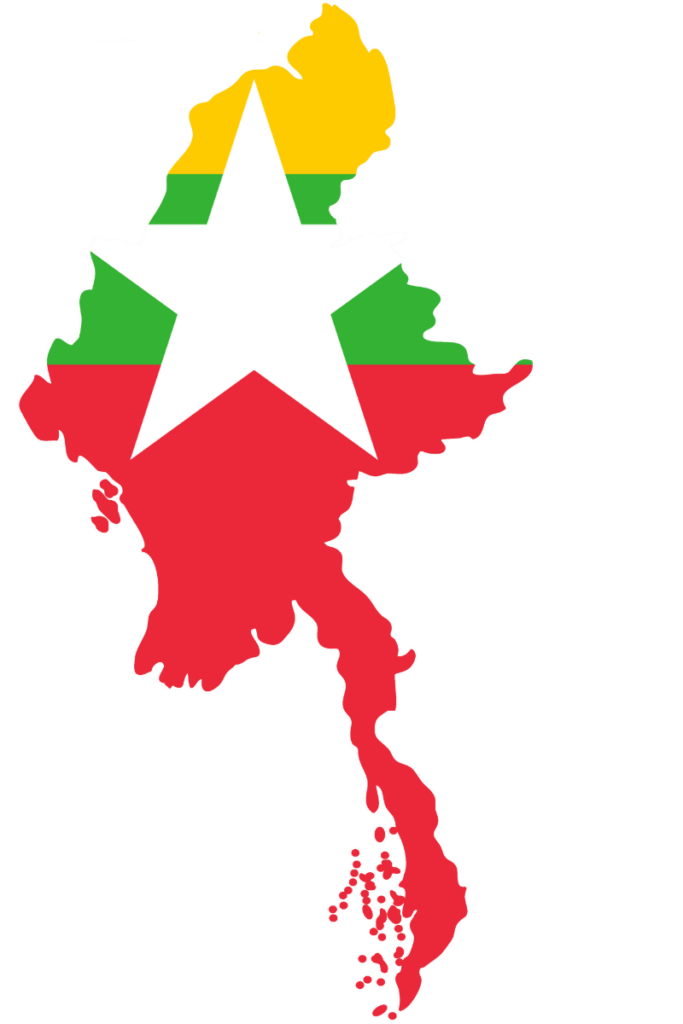
Myanmar Flag Emoji: 🇲🇲
The color palette of the Myanmar flag is characterized by three distinct hues: red, green, and yellow. Each color is crucial in the flag’s overall aesthetic and symbolic representation.
This vibrant combination sets the stage for a deeper exploration of each color’s meanings and significance, reflecting key aspects of Myanmar’s national identity and cultural ethos.
Meaning of Each Color
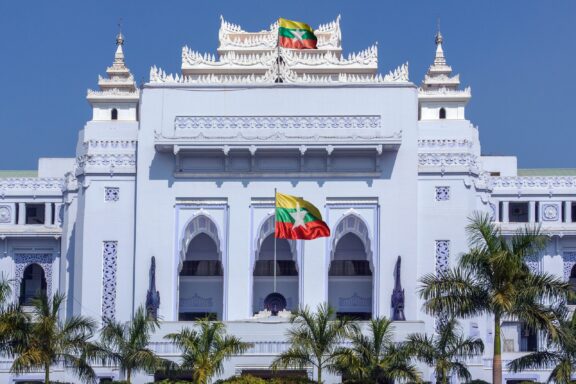
Yellow
Historically, the color yellow in Myanmar’s flag symbolizes unity and solidarity among the nation’s diverse populace. This reflects a common theme in many cultures where yellow represents happiness, wisdom, and harmony.
In Myanmar’s context, it’s a nod to the collective spirit and the country’s striving for a harmonious coexistence of its various ethnic groups.
Green
Green, a color deeply associated with nature, represents Myanmar’s natural wealth and fertility. It is a tribute to the country’s rich and diverse natural landscapes, ranging from lush forests to fertile plains.
Culturally, green is often linked to growth, renewal, and balance, resonating with Myanmar’s aspirations for growth and a harmonious balance with nature.
Red
Red in the flag is a powerful symbol of courage and decisiveness. This color has deep historical roots in many cultures and is often associated with strength and bravery.
For Myanmar, it represents its people’s courage and resolve, reflecting the nation’s resilience and determination throughout its history, including its struggles for independence.
Myanmar Coat of Arms
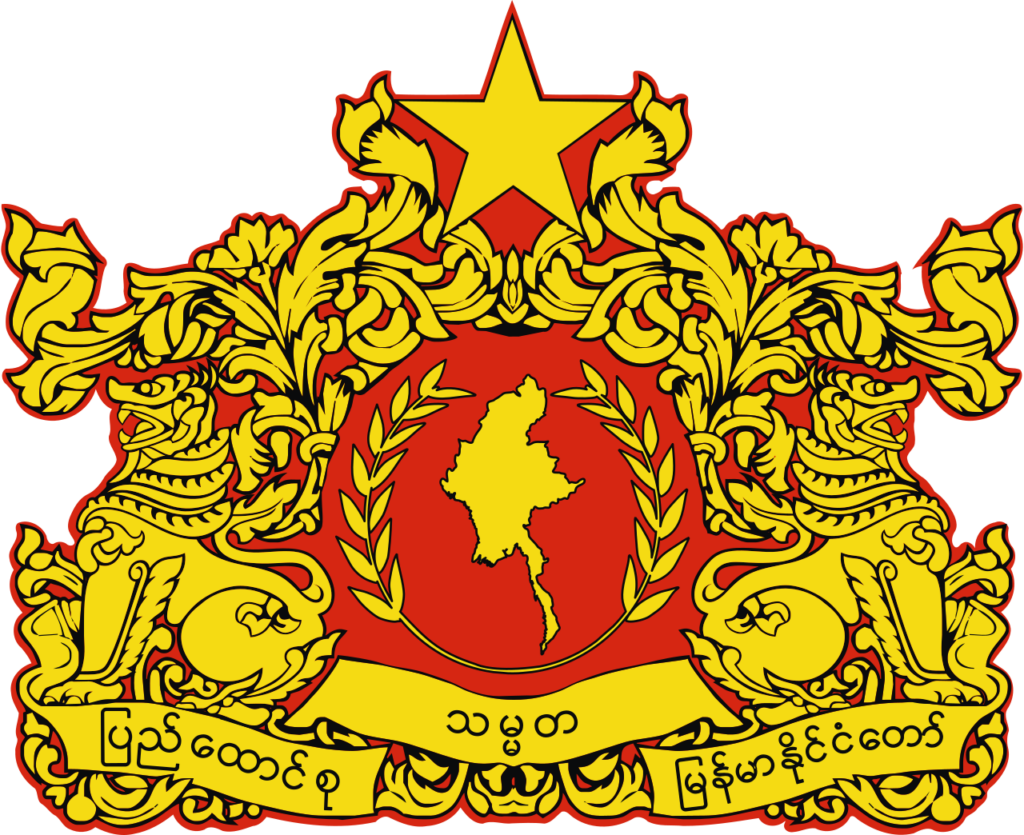
The Coat of Arms of Myanmar, distinct from the flag, carries its own set of symbols and meanings:
- Central Figure: The Coat of Arms features a map of Myanmar in the center, signifying the country’s harmony, flanked by two Chinthe (mythical lions), symbolizing the country’s protection.
- Surrounding Features: Rice stalks, a vital part of Myanmar’s economy and culture, usually encircle the central map. They symbolize agricultural prosperity.
- Motto: The national motto, often included in the Coat of Arms, is “Kaba Ma Kyei,” which translates to “Till the World Ends.” This phrase signifies the enduring nature of the nation and its values.
- Historical Significance: The Coat of Arms is deeply ingrained in Myanmar’s identity, encapsulating its heritage, cultural richness, and the agreement of its diverse ethnic groups.
These elements combine to form a Coat of Arms symbolizing the state and reflecting Myanmar’s cultural identity and historical journey.
Historical Evolution and the Meaning Behind Changes
The flag of Myanmar has seen notable transformations throughout its history, each reflecting the nation’s changing socio-political landscape. The flag symbolized Myanmar’s status as a British territory in the colonial era.
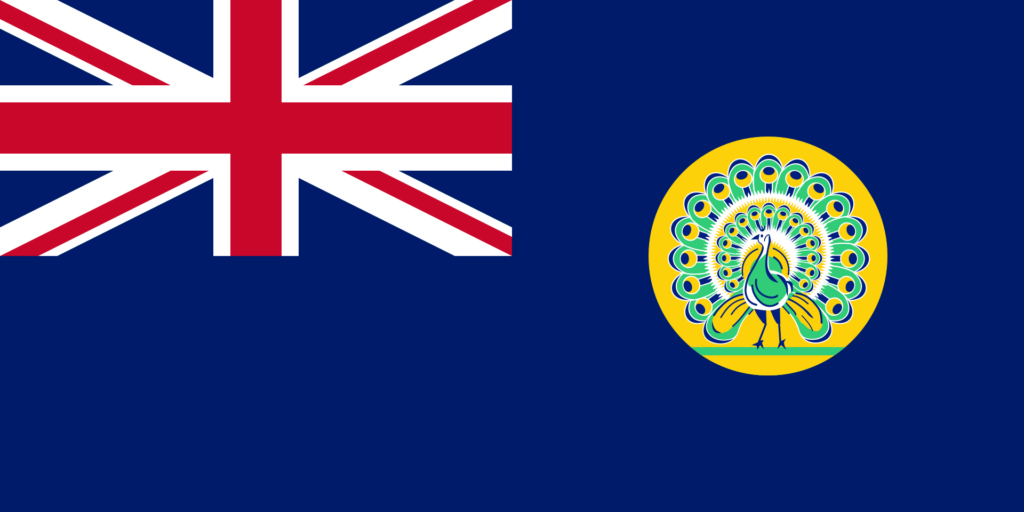
After gaining independence in 1948, the country adopted a new flag representing its newfound sovereignty and unity among various ethnic groups.
In 1974, with the establishment of the Socialist Republic, the flag was redesigned to embody the principles of socialism and the unity of the nation’s member states. This design was slightly modified following the political shifts in 1988 but retained its fundamental symbolism.
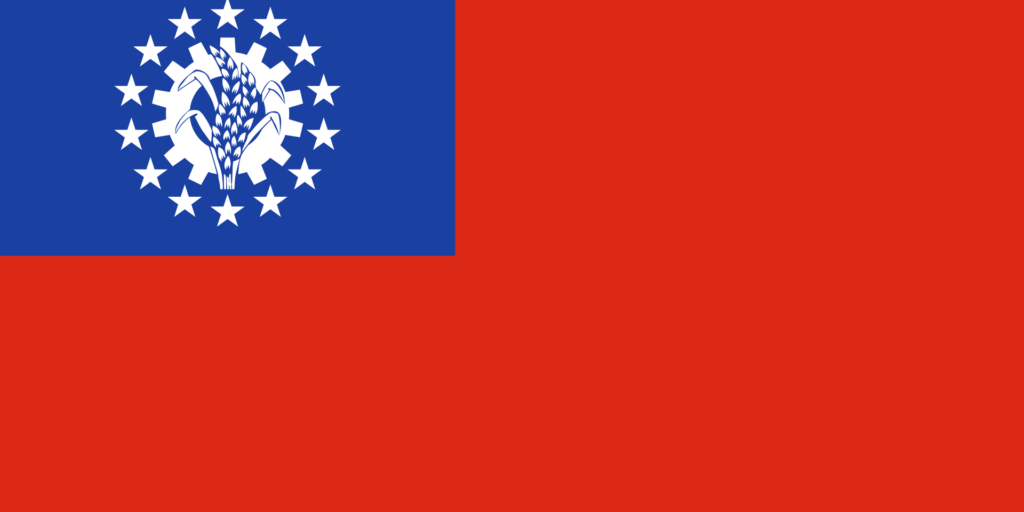
The most significant change occurred in 2010, coinciding with adopting a new constitution. This modern flag departed from previous designs, introducing a simpler layout and different symbolism, in tune with Myanmar’s evolving identity and aspirations for the future.
While differing in design, each flag change served as a visual representation of Myanmar, reflecting its past and envisioning its future.
Overall Symbolic Meaning of the Flag
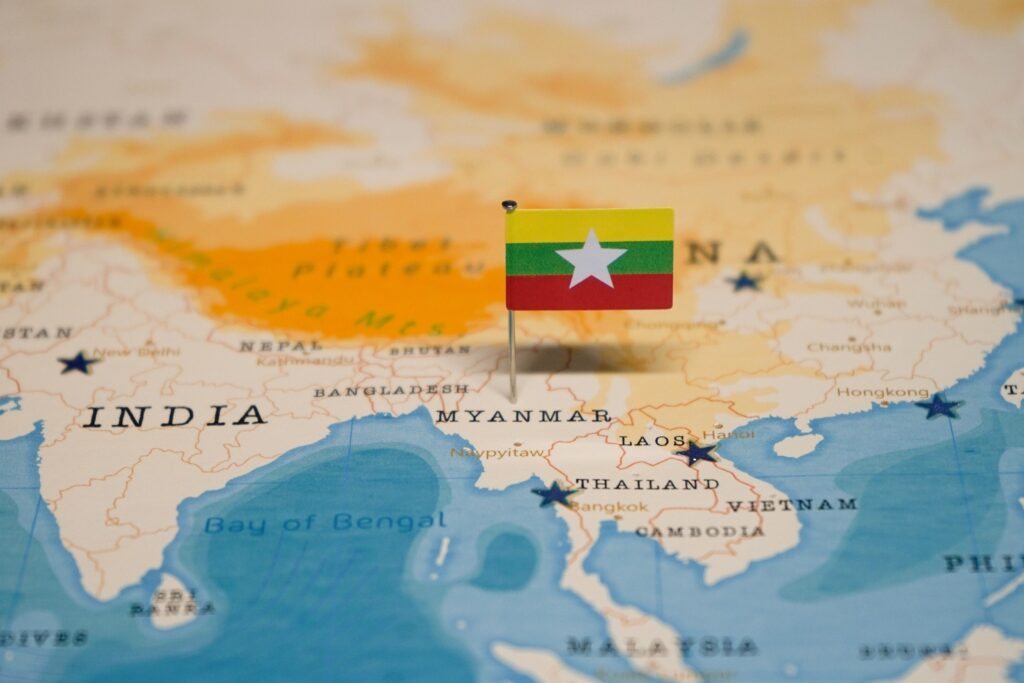
The flag of Myanmar stands as a symbol of the nation’s enduring spirit and evolving journey. It represents a confluence of past struggles, present strengths, and future aspirations. The design, a departure from historical patterns, signifies a new chapter in the nation’s narrative, reflecting contemporary values while respecting its rich heritage.
Similar Flags to the Flag of Myanmar
The flag of Myanmar echoes design elements seen in a few other national flags, highlighting intriguing parallels in color and pattern across the world.
Lithuania
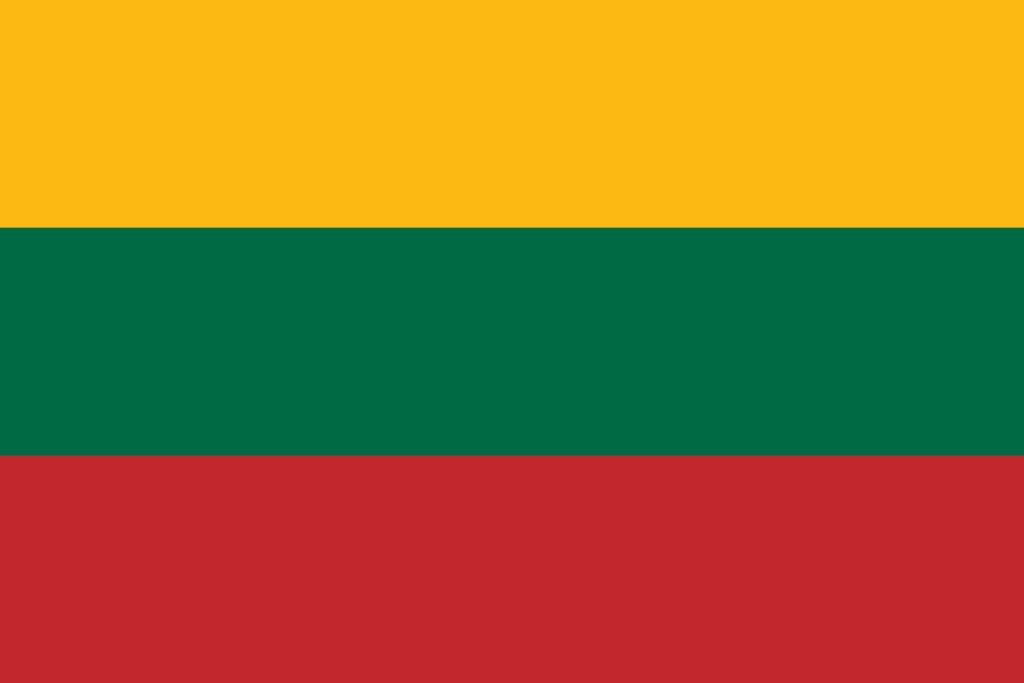
The Lithuanian flag, in addition to its similar color scheme to Myanmar’s flag, represents Lithuania’s natural features and historical heritage. The yellow symbolizes the country’s golden fields, green for its lush forests, and red for the bloodshed in its fight for independence.
Ghana
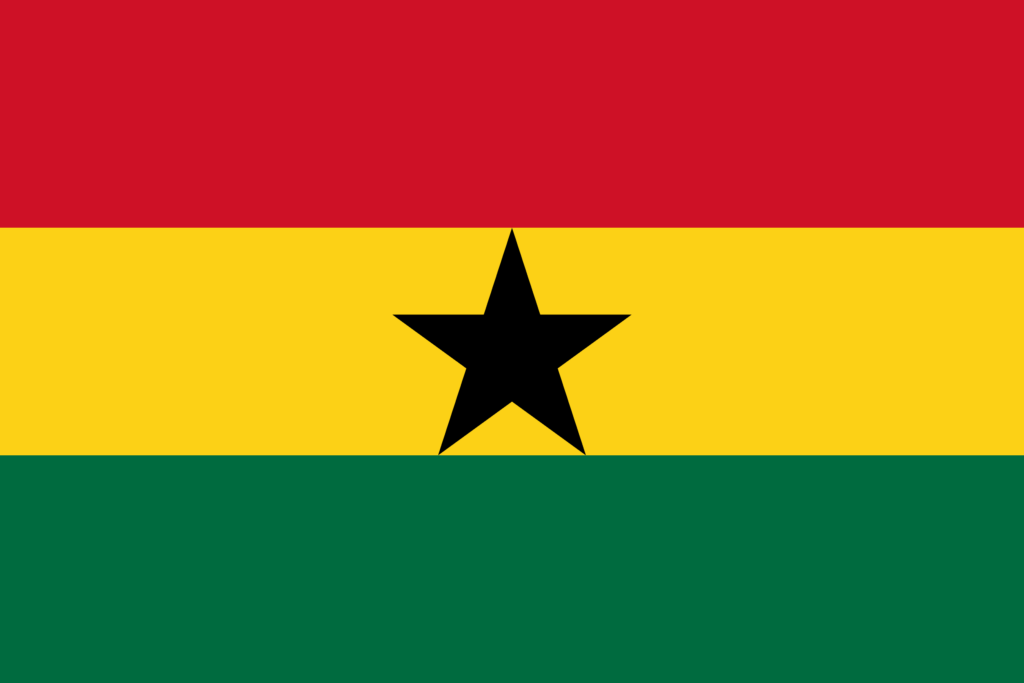
Ghana’s flag, while sharing the Pan-African colors with Myanmar, embodies the African liberation struggle against colonialism. The black star in the center of Ghana’s flag is particularly symbolic, representing African freedom and the legacy of Pan-Africanism.
Bolivia
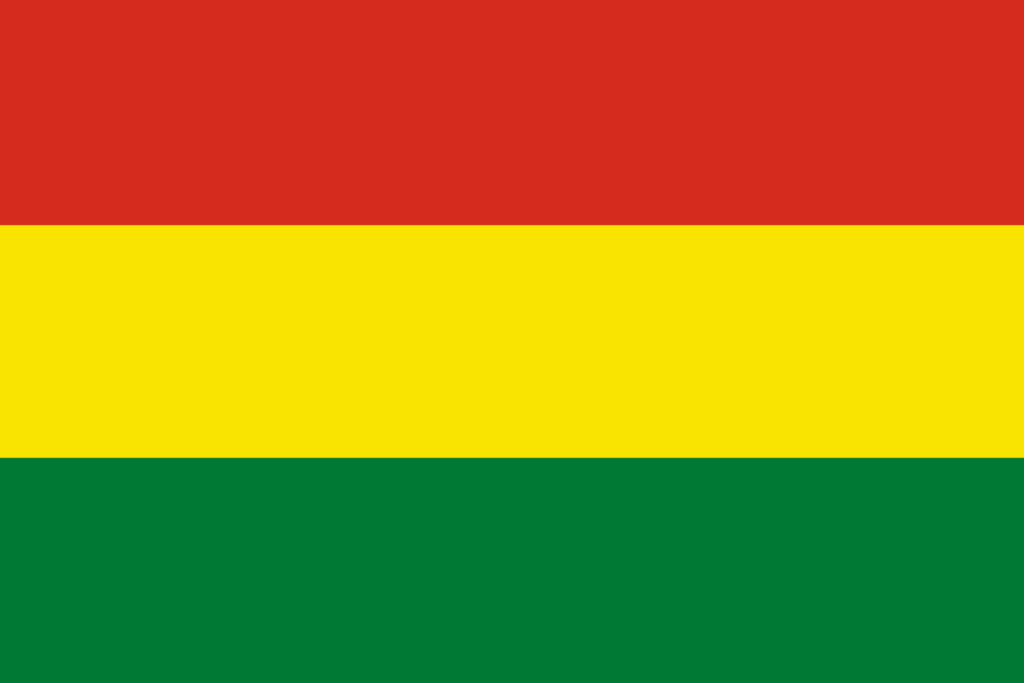
Bolivia’s flag, sharing the same colors as Myanmar’s, has a deeper meaning rooted in its topography and history. The red stripe symbolizes Bolivia’s brave soldiers, the yellow represents the country’s mineral wealth, and the green symbolizes its rich natural resources and hopes for a prosperous future.
Final Thoughts
The flag of Myanmar resonates with deep symbolism, capturing the essence of the nation and its values, firmly placing it within the diverse spectrum of world flags. It is a source of enduring pride for Myanmar’s people, symbolizing their unity, resilience, and hope for a harmonious future.
Image Sources and Copyright Information
- Yangon City Hall with Myanmar Flag: © Steve Allen/Shutterstock
- Map of Southeast Asia with Myanmar Flag Pin: © hyotographics/Shutterstock